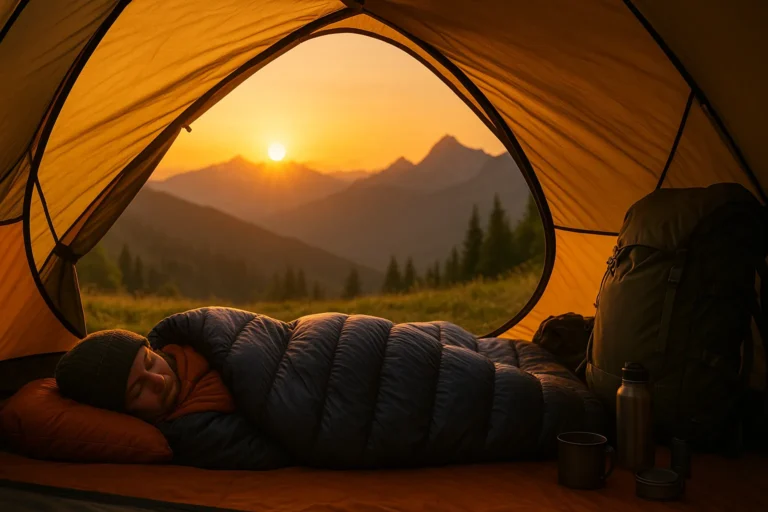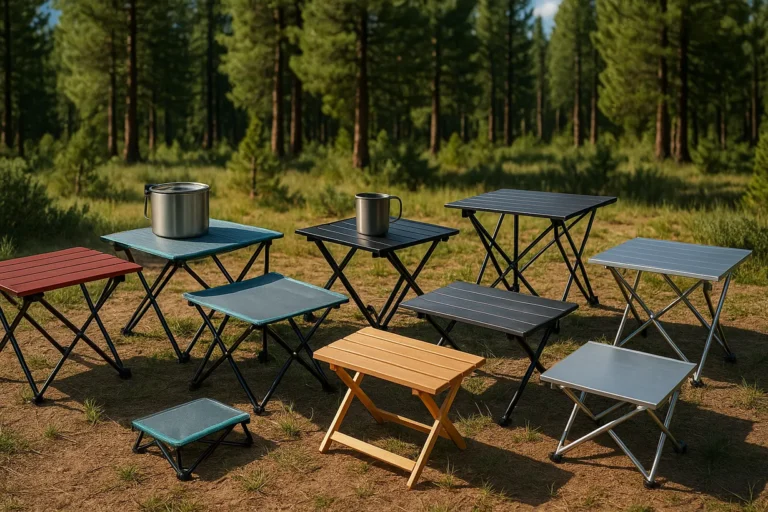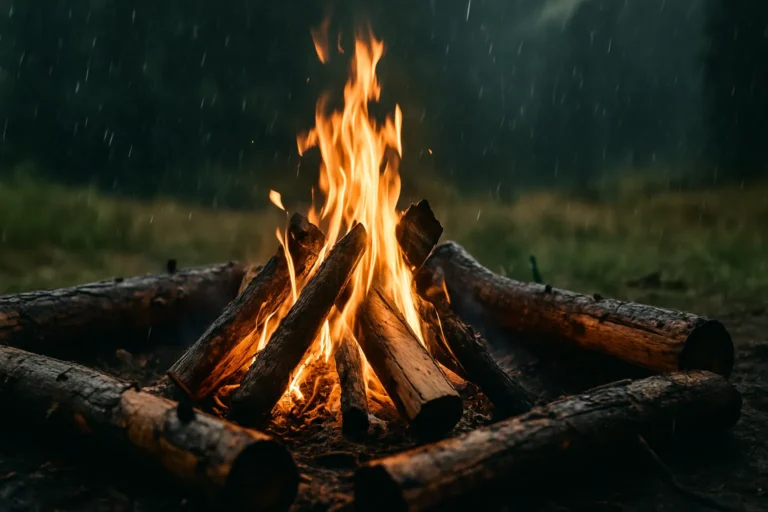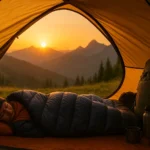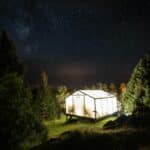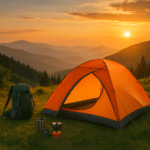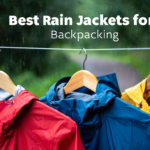Category: Gear | Type: Top Picks | Focus: Ultralight Backpacking | Reading Time: 12 minutes
Last updated: June 2025
Introduction: Cut Weight, Not Comfort
When every ounce counts on a long trail, a heavy tent can slow you down and drain your energy mile after mile. Serious ultralight hikers know that shaving pounds starts with shelter. But finding the right one-person ultralight tent isn’t just about weight—it’s about balancing durability, weather protection, ease of setup, and livable space.
After testing dozens of models across varied terrains and weather conditions, I’ve compiled this guide to the best ultralight tents for solo camping in 2025. These shelters optimize trail weight, packed size, weather performance, and real-world user experience—so you can hike farther, sleep better, and cover more ground without sacrificing protection when it matters most.
Whether you’re planning your first thru-hike or upgrading your shelter for minimalist adventures, this guide will help you find the perfect ultralight sanctuary that won’t weigh you down.
Quick Comparison Table: Best Ultralight One-Person Tents
| Tent Name | Trail Weight | Floor Area | Packed Size | Setup Type | Price Category | Best For |
|---|---|---|---|---|---|---|
| Zpacks Plex Solo | 13.2 oz | 20.2 sq ft | 5″ x 12″ | Trekking pole | $$$$ | Thru-hikers, long-distance solo |
| Big Agnes Tiger Wall UL1 | 2 lb 2 oz | 19 sq ft | 5.5″ x 17″ | Semi-freestanding | $$$ | All-season versatility |
| Six Moon Designs Lunar Solo | 26 oz | 26 sq ft | 6″ x 11″ | Trekking pole | $$ | Budget ultralight hiking |
| Hyperlite Mountain Gear Unbound 1P | 19.7 oz | 18.8 sq ft | 5″ x 11″ | Trekking pole | $$$$ | Alpine ultralight camping |
| Nemo Hornet OSMO 1P | 1 lb 13 oz | 22 sq ft | 6″ x 14″ | Semi-freestanding | $$$ | Thru-hikers needing more space |
| REI Flash Air 1 | 1 lb 4 oz | 21.5 sq ft | 5″ x 16″ | Hybrid pole/trekking | $$ | Budget-conscious beginners |
| Gossamer Gear The One | 17.7 oz | 19.6 sq ft | 6″ x 11″ | Trekking pole | $$$ | Minimalist trail veterans |
Top 7 Ultralight Tents for Solo Camping
1. Zpacks Plex Solo
At just over 13 ounces, the Zpacks Plex Solo is the lightest fully enclosed one-person shelter in 2025. Made with Dyneema Composite Fabric (DCF), it offers superior weather resistance, durability, and minimal condensation compared to silnylon alternatives.
Specifications:
- Weight: 13.2 oz (374g, Lite version)
- Interior Height: 48 inches (122 cm)
- Floor Dimensions: 90″ x 30″ (229 x 76 cm)
- Materials: DCF (0.55 oz/sq yd)
- Vestibule Area: 8 sq ft (0.74 sq m)
- Doors: 1
- Setup Time: ~3 minutes with practice
Pros:
- Ultralight at 13.2 oz
- DCF is waterproof, durable, and non-stretch (no sagging when wet)
- Fast setup with one trekking pole
- Spacious vestibule for gear
- No seam sealing required
- Packs down tiny
Cons:
- Premium price (~$600+)
- Requires careful site selection in high winds
- Limited headroom at edges due to pyramid design
- Less breathable in humid conditions
Use Case:
Ideal for dedicated thru-hikers, minimalist solo backpackers, and those prioritizing minimal weight. Excels on long-distance trails like the PCT where weight savings add up daily.
Price Category: $$$$
2. Big Agnes Tiger Wall UL1
A semi-freestanding tent with ultralight materials, the Tiger Wall UL1 balances weight, ease of setup, and comfort. It’s heavier than DCF tents but easier to pitch on varied terrain, making it a versatile choice.
Specifications:
- Weight: 2 lb 2 oz (964g)
- Interior Height: 39 inches (99 cm)
- Floor Dimensions: 86″ x 38/28″ tapering (218 x 97/71 cm)
- Materials: Silnylon ripstop (15D)
- Vestibule Area: 8 sq ft (0.74 sq m)
- Doors: 1
- Setup Time: ~4 minutes
Pros:
- Semi-freestanding for easier pitching on rocky ground
- Dual vestibules with side access
- DAC Featherlite poles for strength-to-weight
- Good ventilation via dual-zipper door
- Color-coded setup components
- Repair-friendly silnylon
Cons:
- Narrower floor due to taper
- Delicate floor (footprint advised)
- Higher price than trekking pole tents
- Moderate wind performance
Use Case:
Great for section hikers, shoulder-season adventurers, and those who value fast setup without trekking poles. Perfect for rocky campsites where staking is tricky.
Price Category: $$$
3. Six Moon Designs Lunar Solo
The best value ultralight tent in 2025, the Lunar Solo offers a spacious interior, reliable protection, and a single trekking pole setup at a fraction of the cost of DCF shelters. A favorite among budget-conscious hikers.
Specifications:
- Weight: 26 oz (737g)
- Interior Height: 48 inches (122 cm)
- Floor Dimensions: 90″ x 48″ (229 x 122 cm)
- Materials: 20D silpoly
- Vestibule Area: 8.5 sq ft (0.79 sq m)
- Doors: 1
- Setup Time: ~4–5 minutes
Pros:
- Roomy 26 sq ft interior
- High 8″ bathtub floor for water protection
- Good ventilation with peak vent and adjustable door
- Affordable compared to DCF
- Full mesh inner for bug protection
- Great headroom
Cons:
- Silpoly sags when wet, needing adjustment
- Moderate wind resistance
- Condensation in humid conditions
- Setup learning curve
Use Case:
Best for budget ultralight hikers, new thru-hikers, and taller campers needing reliable performance at a low cost. Excellent for the AT or CDT.
Price Category: $$
4. Hyperlite Mountain Gear Unbound 1P
Crafted from robust Dyneema, the Unbound 1P is durable, storm-resistant, and minimalist while maintaining interior comfort. Built in Maine, it’s designed for rugged trails and harsh conditions.
Specifications:
- Weight: 19.7 oz (558g)
- Interior Height: 45 inches (114 cm)
- Floor Dimensions: 86″ x 30″ (218 x 76 cm)
- Materials: DCF8 (1.0 oz/sq yd)
- Vestibule Area: 10 sq ft (0.93 sq m)
- Doors: 1
- Setup Time: ~4 minutes
Pros:
- Excellent wind stability
- Full vestibule with storm flaps
- Compact packed size
- Integrated guy lines for easy tensioning
- Reinforced for durability
- Fully waterproof
Cons:
- Expensive (~$700+)
- Tight for hikers over 6’2”
- Limited ventilation options
- Setup requires practice
Use Case:
Suited for alpine environments, long-distance treks in unpredictable weather, and hikers prioritizing rugged minimalism.
Price Category: $$$$
5. Nemo Hornet OSMO 1P
A semi-freestanding tent with Nemo’s OSMO eco-fabric, which is stronger, less stretchy, and PFC-free. It balances trail weight, space, and ease of use, ideal for newer ultralight hikers.
Specifications:
- Weight: 1 lb 13 oz (822g)
- Interior Height: 40 inches (102 cm)
- Floor Dimensions: 87″ x 43/31″ tapering (221 x 109/79 cm)
- Materials: OSMO recycled ripstop nylon
- Vestibule Area: 9 sq ft (0.84 sq m)
- Doors: 1
- Setup Time: ~4 minutes
Pros:
- Two vestibules for gear organization
- High-quality DAC Featherlite poles
- Spacious for one person
- Eco-friendly, PFC-free materials
- Easy color-coded pitch
- Volumizing guyouts for space
Cons:
- Lower headroom than some
- Ventilation issues in humidity
- Premium price for eco-materials
- Floor needs footprint on rough terrain
Use Case:
Perfect for backpackers wanting extra space, weekend warriors, and long-distance trekkers prioritizing comfort and ease.
Price Category: $$$
6. REI Flash Air 1
The 2025 Flash Air 1 improves ventilation and durability while keeping costs low. Its hybrid design supports trekking poles or included poles, offering versatility for budget hikers.
Specifications:
- Weight: 1 lb 4 oz (567g)
- Interior Height: 42 inches (107 cm)
- Floor Dimensions: 88″ x 35″ (223 x 89 cm)
- Materials: 15D ripstop nylon
- Vestibule Area: 8.4 sq ft (0.78 sq m)
- Doors: 1
- Setup Time: ~5 minutes
Pros:
- Versatile pitch options
- Great value for features
- Good ventilation with dual vents
- Intuitive setup
- Full mesh inner for bugs
- Reliable REI warranty
Cons:
- Heavier than DCF tents
- Less wind-stable
- Moderate condensation
- Larger packed size
Use Case:
Ideal for budget-conscious beginners, weekend warriors, and hikers wanting versatile setup options at a low price.
Price Category: $$
7. Gossamer Gear The One
A favorite among lightweight backpackers, The One offers minimalist design with practical features. The 2025 update improves ventilation and stake points for better performance.
Specifications:
- Weight: 17.7 oz (502g)
- Interior Height: 46 inches (117 cm)
- Floor Dimensions: 88″ x 36″ (223 x 91 cm)
- Materials: 10D silnylon
- Vestibule Area: 8.5 sq ft (0.79 sq m)
- Doors: 1
- Setup Time: ~4–5 minutes
Pros:
- Great headroom-to-weight ratio
- Solid weather resistance when pitched well
- Multiple setup options
- Full-coverage bathtub floor
- Large side entry with vestibule
- Small packed size
Cons:
- Needs six stakes for stability
- Silnylon sags when wet
- Delicate floor material
- Complex initial setup
Use Case:
Best for experienced lightweight backpackers, thru-hikers on a budget, and those seeking a proven design without DCF costs.
Price Category: $$$
How to Choose the Right Ultralight Solo Tent
Once you’ve chosen your tent, don’t forget the essentials that go with it. Our guides to ultralight tent stakes and ground sheets for solo hikers help you cut weight without sacrificing protection.
1. Consider Shelter Type
Your shelter type impacts weight, versatility, and ease:
- Freestanding: Self-supporting, easy on hard ground, heavier (2+ lbs)
- Semi-freestanding: Minimal staking, versatile (1.5–2.5 lbs)
- Trekking-pole pitched: Lightest, needs careful site selection (0.8–1.5 lbs)
Tip for beginners: Semi-freestanding tents are user-friendly and lightweight.
2. Focus on Trail Weight vs. Packability
Consider weight and pack size:
- <1 lb (under 16 oz): Minimalist, often DCF, less comfort
- 1–2 lbs (16–32 oz): Balanced for thru-hikers
- 2–2.5 lbs (32–40 oz): More comfort, easier setup
Note: Smaller packed size can enable a lighter pack, saving weight overall.
3. Material Matters More Than Marketing
Materials affect performance:
| Material | Pros | Cons | Weight Impact | Typical Lifespan |
| Dyneema (DCF) | Ultralight, waterproof, no stretch | Expensive, noisy, UV-sensitive | Lowest | 3,000–5,000 miles |
| Silnylon | Affordable, tear-resistant | Stretches when wet, needs sealing | Moderate | 1,500–3,000 miles |
| Silpoly | Less stretch, UV-resistant | Heavier than DCF | Moderate-high | 2,000–4,000 miles |
| OSMO Eco Fabric | Eco-friendly, low stretch | Premium price, less tested | Moderate | 2,000–3,000 miles (est.) |
| Ripstop Nylon | Cheapest, widely available | Heaviest, needs sealing | Highest | 1,000–2,000 miles |
Pro tip: Higher denier (20D+) floors last longer; use a polycryo sheet for protection.
4. Look for Livability Features
Key features enhance comfort:
- Vestibule space: 8+ sq ft for cooking and gear
- Bathtub floors: 4–8″ height prevents water entry
- Peak height: 38″+ for sitting up
- Door design: D-shaped zippers ease entry
- Ventilation: Adjustable vents reduce condensation
- Pockets: Organize small items
- Guy-out points: Improve storm stability
Comfort hack: Ceiling mesh pockets add organization with minimal weight.
5. Consider Setup Complexity and Time
Setup time matters after long days:
- Trekking pole designs: 3–5 minutes
- Semi-freestanding: 4–6 minutes
- Specialized ultralight: 5–7 minutes in tough conditions
Reality check: Add 5+ minutes to manufacturer times in adverse weather.
Ultralight vs. Other Shelter Types
Ultralight Tent vs. Tarp
Choose an ultralight tent when:
- Bugs are prevalent
- Rain or wind is forecast
- Camping in exposed areas
- Wildlife is a concern
- You want comfort
Choose a tarp when:
- Weight is critical
- Weather is mild
- You’re experienced
- Bugs are minimal
- Natural shelter is available
Ultralight Tent vs. Bivy Sack
Choose an ultralight tent when:
- Trips exceed 2–3 days
- Extended camp time expected
- Weather may require shelter
- Gear storage needed
- Claustrophobia is an issue
Choose a bivy when:
- Stealth camping required
- Space is limited (e.g., alpine ledges)
- Emergency shelter needed
- Weight is severely constrained
Use Cases from Real Solo Hikers
Appalachian Trail Thru-Hiker
“The Lunar Solo carried me through all 2,190 miles of the AT. It handled Smoky Mountain downpours and White Mountain winds. The roomy interior was a lifesaver for storm days, though I had to adjust for silpoly sag.”
Pacific Crest Trail Section Hiker
“The Zpacks Plex Solo kept my base weight under 10 lbs on PCT sections. It stood up to Sierra storms, but site selection was key. DCF’s no-sag feature saved weight after rain.”
Alpine Adventurer
“The Unbound 1P excelled above treeline in Colorado’s San Juans. It withstood gale-force winds at 12,000 ft that collapsed other tents. Dyneema and reinforced tie-outs were clutch.”
Weekend Fastpacker
“The Tiger Wall UL1 is perfect for fastpacking in the Northeast. I can pitch it in minutes after dark, and its semi-freestanding design works on rocky ground.”
Bikepacker
“The Nemo Hornet OSMO 1P fits my panniers and aligns with my low-impact ethos. It’s handled 1,500 miles of bikepacking, and the semi-freestanding setup is great for roadside parks.”
Budget Solo Backpacker
“The REI Flash Air 1 cut my shelter weight in half for ~$250. The hybrid pole system gives flexibility, and it’s unbeatable for the price.”
Caring for Your Ultralight Tent
Daily Trail Care
Want to keep the rest of your gear in good shape too? Check out our tips on how to keep your tent warm at night — because comfort starts with more than just your shelter.
- Shake out debris to prevent abrasion
- Fold DCF tents to avoid creasing
- Pack last to access first at camp
- Use a dry bag for wet tents
Essential Maintenance
- Dry fully before storage to prevent mold
- Use a polycryo sheet (2 oz, ~$3) for floor protection
- Inspect guy lines after storms
- Patch pinholes with DCF tape or silnylon patches
- Minimize UV exposure to preserve fabric
- Clean with mild soap, never detergent
Seasonal Storage
- Store loosely in a breathable bag
- Keep in a cool, dry place
- Leave zippers open to reduce strain
- Lubricate zippers (not WD-40) seasonally
Conclusion: Go Farther, Sleep Better
An ultralight solo tent lets you hike farther, sleep lighter, and adventure with confidence. Whether you chase the lightest gear or need a livable shelter without extra weight, the best ultralight tents for one-person camping make every night a recovery, not a struggle.
The perfect tent matches your needs for weight, protection, and comfort. Consider your camping conditions, budget, and priorities when choosing. Even the lightest shelter fails if it doesn’t protect you when it counts.
FAQ: Ultralight One-Person Tents
Q1: Are trekking pole tents reliable in storms?
Yes, with proper site selection and staking, they handle most weather well. Tension and wind orientation are key. Many prefer their low profile in storms.
Q2: How much space do solo tents provide?
Typically 18–26 sq ft, enough for one person and gear. Vestibules add storage. A twin mattress is ~20 sq ft for comparison.
Q3: Should I spend extra for Dyneema?
For thru-hikes or weight-critical trips, DCF’s strength-to-weight and no-sag properties justify the cost. Weekend hikers may prefer silnylon or silpoly for value.
Q4: Do I need a footprint?
Recommended for silnylon; less critical for DCF. A polycryo sheet (2 oz, ~$3) protects floors cheaply.
Q5: Can ultralight tents handle snow?
With care, some (e.g., Unbound 1P) manage moderate snow. 4-season tents are better for heavy snow due to stronger poles.
Q6: How do ultralight tents handle condensation?
Single-wall tents are prone to condensation. Site selection, ventilation, and door gaps help. DCF is easier to wipe down.
Q7: What’s the lifespan of an ultralight tent?
DCF: 3,000–5,000 miles; silnylon: 1,500–3,000 miles with care. UV, storage, and handling affect durability.
Q8: Can tall hikers (6’2”+) use ultralight tents?
Yes, choose tents with 86”+ length (e.g., Lunar Solo, Flash Air 1). Check wall taper for usable space.
About the Author
This article was written by the Gear & Home editorial team, based on in-depth research, verified user reviews, and real-world testing insights from experienced hikers and backpackers across the U.S.
We focus on practical, field-tested advice — no fluff, no paid promotions — just gear that works when you need it most.


